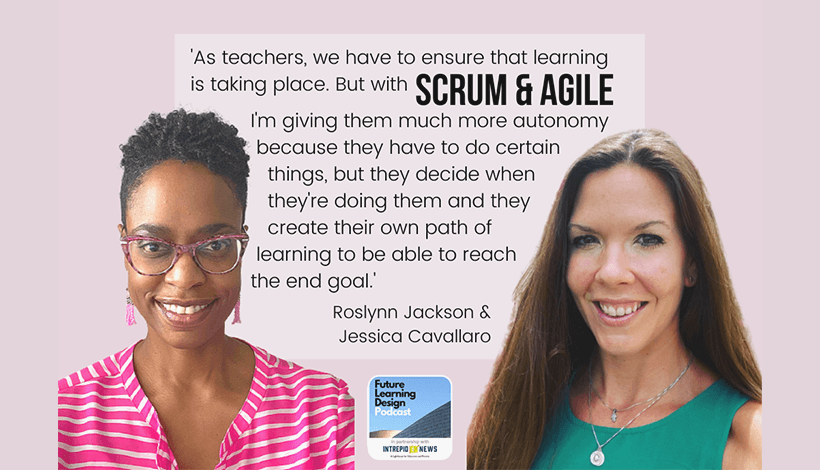Published 9/13/2021 and 12/27/2022
The Agile Mindset with Jessica Cavallaro and Roslynn Jackson, co-founders of The Agile Mind and teachers at the Pine Crest School in Florida, show teachers how to use an Agile mindset to help students acquire the skills needed to solve real world problems while learning educational concepts.
Agile is not about knowing all the jargon. It is a thought process. It is rigorous.
“This makes your life easier. It is a win-win for everyone. You don’t have to know it all to be able to try it. Agile is a methodology. You can do it now. You can give your kid that power now. The more you know, the more you practice it. The better you get for your students.”–Roslyn.
Jessica, a middle school English teacher, is an innovative educator and curriculum designer. She is a PBL and Design Thinking champion who creates purposeful learning experiences, both inside and outside the classroom. Jessica is passionate about putting students first and developing real-life skills in the classroom. After experiencing hybrid learning at the beginning of the pandemic, Jessica was concerned about students’ lost connections and lack…


